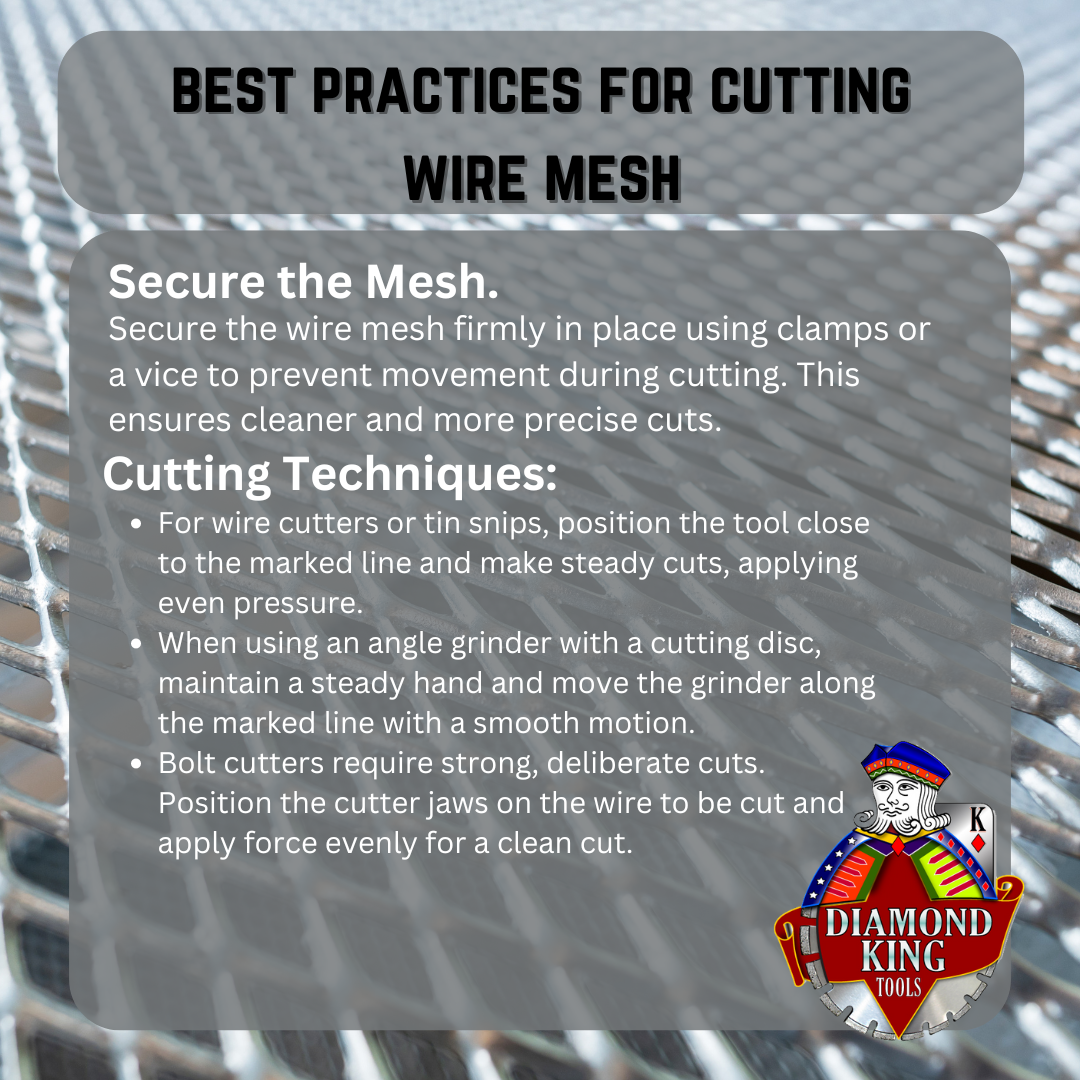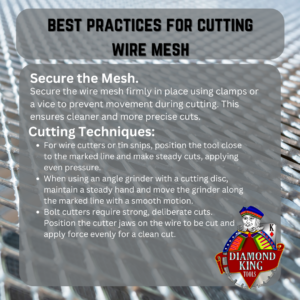Wire mesh is a versatile material used in various industries, from construction to arts and crafts. However, cutting wire mesh can be a challenging task if not approached with the right techniques. In this blog post, we’ll explore the best practices for cutting wire mesh efficiently and safely.
Understanding Wire Mesh
Before delving into cutting techniques, let’s understand wire mesh. It typically consists of intertwined wires forming a grid-like pattern. The thickness of the wires and the size of the grid can vary significantly, influencing the cutting process.
Tools of the Trade
Having the right tools is essential for precise wire mesh cutting. Here are some tools commonly used:
- Wire Cutters: Ideal for cutting thinner wire mesh with precision.
- Angle Grinder with Cutting Disc: Effective for cutting thicker wire mesh.
- Tin Snips: Suitable for cutting smaller pieces or intricate shapes.
- Bolt Cutters: Useful for cutting thicker wires in the mesh.
Best Practices for Cutting Wire Mesh
- Safety First: Always wear appropriate safety gear, including gloves and goggles, to protect against sharp edges and flying debris.
- Select the Right Tool: Choose the cutting tool based on the thickness of the wire mesh. For thin mesh, wire cutters or tin snips work well, while angle grinders or bolt cutters are suitable for thicker mesh.
- Marking and Measuring: Use a marker or chalk to mark the cutting line accurately. Double-check measurements before cutting to avoid mistakes.
- Secure the Mesh: Secure the wire mesh firmly in place using clamps or a vice to prevent movement during cutting. This ensures cleaner and more precise cuts.
- Cutting Techniques:
- For wire cutters or tin snips, position the tool close to the marked line and make steady cuts, applying even pressure.
- When using an angle grinder with a cutting disc, maintain a steady hand and move the grinder along the marked line with a smooth motion.
- Bolt cutters require strong, deliberate cuts. Position the cutter jaws on the wire to be cut and apply force evenly for a clean cut.
- Smooth Edges: After cutting, use a file or sandpaper to smooth any rough edges or burrs. This step enhances safety and aesthetics.
- Clean-Up: Remove any debris or leftover pieces of wire to keep your workspace tidy and safe.
- Practice Patience: Rushing through the cutting process can lead to mistakes or injuries. Take your time, especially when dealing with thicker wire mesh.
Tips for Specific Projects
- Art and Crafts: For intricate designs, use tin snips or small wire cutters for precise cuts.
- Construction: Angle grinders or bolt cutters are preferred for cutting larger sections of wire mesh quickly.
- DIY Projects: Experiment with different cutting tools and techniques to find what works best for your specific project.
Mastering the art of cutting wire mesh requires a combination of the right tools, techniques, and safety measures. By following these best practices, you can achieve clean cuts, whether you’re working on a small craft project or a large construction endeavor. Remember to prioritize safety, accuracy, and patience for optimal results. Happy cutting!



